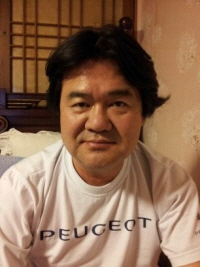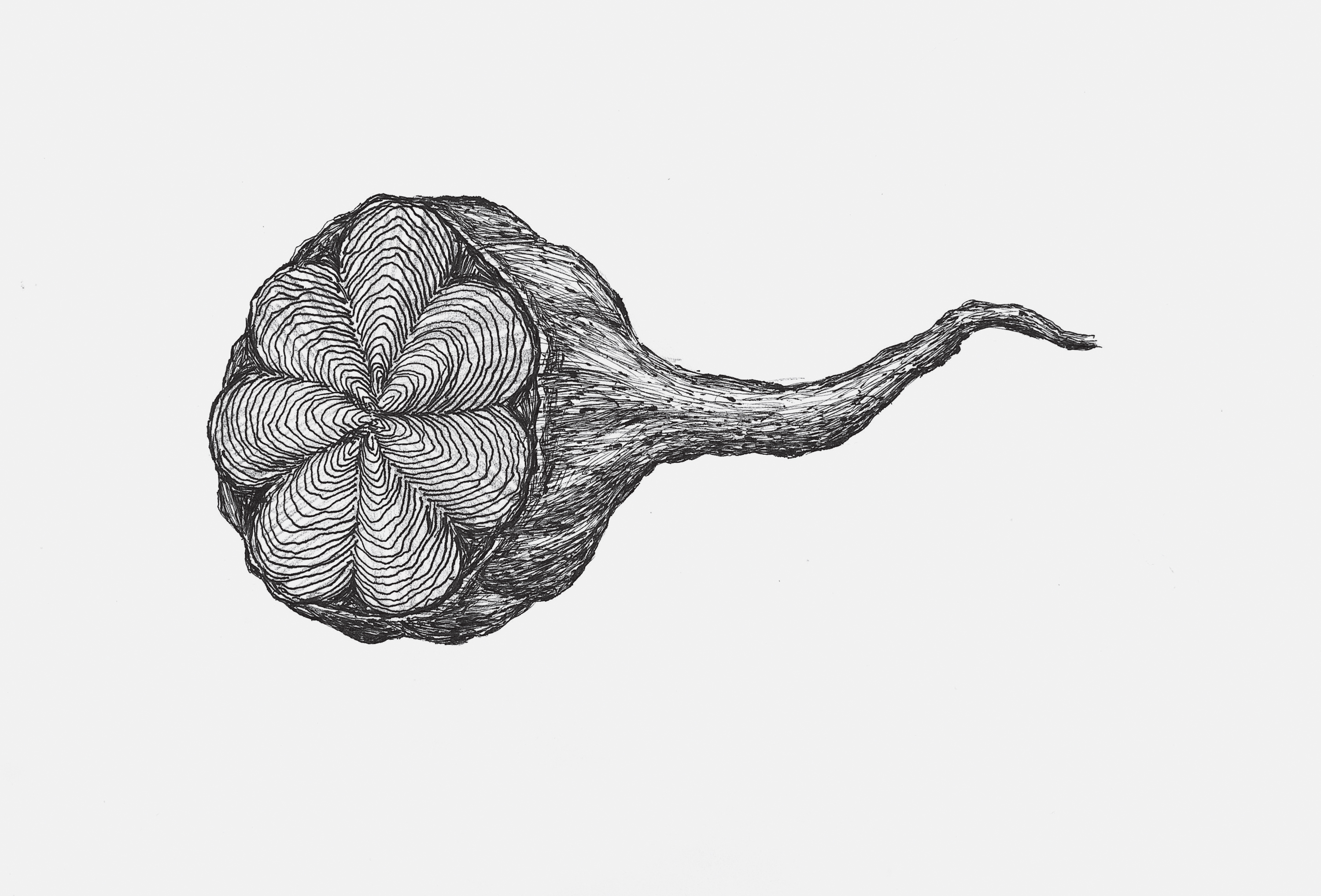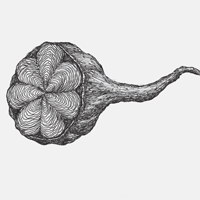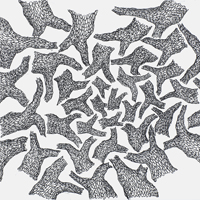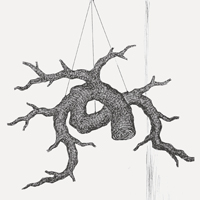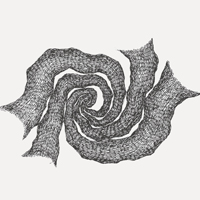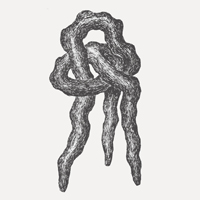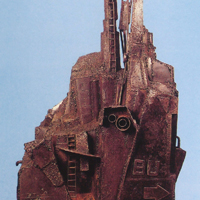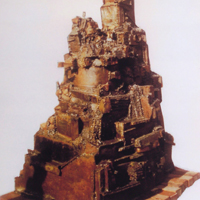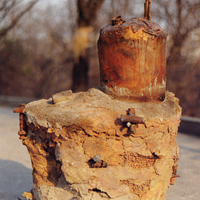Sculpture of Formation and Condensation - Figuration and Meaning of Lee Gil Rae's Sculpture
Gate to All Wisdom and Wonder
From Soil to Earth is a series of three sculptures by Lee Gilrae. I find interpretation of this series to be very challenging because the difference between soil and earth has never been obvious to me. However, I think the context of the title is closely related to his later works.
From Soil to Earth is a series of three sculptures by Lee Gilrae. I find interpretation of this series to be very challenging because the difference between soil and earth has never been obvious to me. However, I think the context of the title is closely related to his later works.
'Soil' is the top layer of the earth's surface, consisting of rock and mineral particles mixed with organic matter. 'Earth' is the surface of the earth excluding those parts covered by bodies of water. If soil is substance to be held in our hands as seen in the expressions such as 'soil dust' or 'a handful of soil,' earth means land over which such soil is spread far and wide. What, therefore, is the meaning of 'From Soil to Earth'? It is rather ambiguous. Does it mean that it is soil rather than earth? Or does it mean that soil should be returned to earth? It can be interpreted as either 'to change soil into earth' or 'to return to earth from soil.' After pondering this conundrum for some time, I wonder if I should distinguish between soil and earth at all, though there may be need to differentiate soil from earth conceptually. I have concluded that my determination to distinguish between them has prevented me from properly reading the meaning of this series. If so, there is no need to distinguish them at all! Isn't soil is nothing but earth and earth nothing but soil? What does it mean to me to distinguish between the two?
In earth is soil and in soil is earth. I think sculptor Lee Gilrae wanted to concentrate on earth rather than distinguishing soil from earth. He would want to embrace the symbolism of earth more than that of soil. He would want to make Mother Earth by bringing earth particles together. That granted, what is Mother Earth at all? The secret lies behind the form of Lee's three pieces of the series. Each of the three sculptures looks like a lump of soil which has been weathered over a very long period of time. They are made of synthetic resins mixed with clay. Some say the lump is a product of weathering, but when looking at it any other way, it looks like the first Mother Earth and the seed of earth just conceived. This is why we feel the energy in Lee’s sculptures of earth that brought forth life eons ago.
Each lump is suggestive of form of earth and has three legs. Like a three-legged crow in mythology, Lee's sculptures are three-legged earth. Let's ascertain the meaning of three-legged earth in a three-legged crow. A three-legged crow lives on the sun. This myth, which is depicted on a Goguryeo Kingdom mural, starts with the sun crossing the sky. Han apocrypha Chunqiu yuanming bao (春秋元命包)' states a crow living on the sun has three legs because the sun is yang and 3 is the number of yang. Three legs symbolize heaven, earth, and man. This ancient mythology appears in Dangun segi' written in the late Goryeo period, which indicates that 'three legs' have been considered symbolically very important for a very long time. Whether Lee Gil Rae borrowed the meaning of three legs of ancient times or not, 3 is the best number for the supports of his works, and his works communicate such ancient meaning clearly.
I added many other meanings to From Soil to Earth and analyzed it. Scattered soil coalesced into a lump and then created Mother Earth, that is, earth. The soil and earth are the same as the origin of the sculpture. Let's think about the creation myth of Christianity: God physically shaped Adam from clay of earth. It seems that Lee wanted to say that the true nature of the most perfect sculpture is nothing but the truth of soil being earth and earth being soil. Sculpture may start with this very truth. The Bible reads, "Then the Lord God formed a man from the dust of the ground and breathed into his nostrils the breath of life, and the man became a living being." (Genesis 2:7)
From Soil to Earth is surely 'earth of the living being.' And through his work, Lee explores how the living being of earth was created and where it originated, rather than simply talking about change from soil to earth. For this reason, Lee may have believed that all sculptures could be born from the living being of earth. Since From Soil to Earth, nearly all of Lee's works have been products of earth. Should we not, therefore, call From Soil to Earth 'Gate to All Mystery'? Chapter 1 of Laozi's Dao De Jing reads, "(The Dao that can be spoken is not the enduring and unchanging Dao. The name that can be named is not the enduring and unchanging name. …) Lie in the deepest of my mystery, is the 'gate' to all wisdom and wonder."
Towards Formation and Condensation
After the series From Soil to Earth, Lee Gilrae did the From Point to Line series. His works from 1997 and 1998 in From Soil to Earth followed by From Point to Line are really interesting. After he completed the From Point to Line series, he produced the Creation and Cohesion series from 2001 to 2006. Therefore, for the ten years from 1997 to 2006, Lee is considered to have completed the framework of the structure of his art. He started by contemplating the fundamental nature of living which the sculptural substance called 'soil and earth' and proceeded to the basics of sculpture called 'point and line,' and then entered the stage of 'Formation and Condensation' to create his own sculptural form.
After the series From Soil to Earth, Lee Gilrae did the From Point to Line series. His works from 1997 and 1998 in From Soil to Earth followed by From Point to Line are really interesting. After he completed the From Point to Line series, he produced the Creation and Cohesion series from 2001 to 2006. Therefore, for the ten years from 1997 to 2006, Lee is considered to have completed the framework of the structure of his art. He started by contemplating the fundamental nature of living which the sculptural substance called 'soil and earth' and proceeded to the basics of sculpture called 'point and line,' and then entered the stage of 'Formation and Condensation' to create his own sculptural form.
His series of From Point to Line seems to be an attempt by Lee to discover the most basic form of sculpture called point and line rather than the meaning of the words 'point' and 'line.' Lee experimented with 'point' with a round egg-shaped form, and 'line' with round and square columns. Pieces in this series were made by piling up or fixing oyster shells. ‘Round' and 'columnar' forms added to the peculiarity of material used, and these pieces impart an odd feeling. Shell mounds have been excavated from sites of the Neolithic Age. Although white oyster shells are not a shell mound, the form of points and lines created by oyster shells transcend the present in which we live now. Where will time cross? The Neolithic Age? Or sometime in antiquity? Neither is right. Without realizing it, Lee shows the place transcended: it is the space of aesthetic appreciation which is imagined when the material and the form are put together in harmony, rather than somewhere in history.
Aesthetic appreciation is not by sight or tactile experience. It is a mental process and something we feel with our souls. Lee completed a sculpture to be seen and sculptured sound we cannot see. He created a sculpture we can touch and he imbued it with soul we cannot see. In the same way that points form a line, Lee collected numerous shells and created archetypes of nature. The seascape of the wind, waves, sand, sunshine, moonlight, and silvery sparkling water is engraved inside his work. Sound and soul that cannot be seen fill every part of his work. He created forms which look like a gourd, a wooden gong, tongs, or a huge scepter with his hands, but the things engraved inside his work could not be done by hand: they were born of their own accord.
If works in the From Point to Line series were in the state that cannot separate artificial moments from spontaneous and natural moments, those in the Formation and Condensation series explore ways to recreate spontaneous and effortless nature by artificial moments. After the Formation and Condensation series, it seems that Lee deeply considered the role and creativity of a sculptor. Most of his works at this time were 'sculptured' forms of things from nature and artifacts such as 'garlic,' 'pumpkin,' 'light bulb,' and 'apple.' As seen in the examples of monumental sculptures in the shape of garlic or a pumpkin, nature is not nature. And the aesthetic symbolism as a sculpture is accordingly reduced. I think Lee Gil Rae was somewhat depressed during this period.
I remember Lee keeping silent in deep meditation for five years, from 2003 to 2007. He was then establishing a paradigm of sculptural aesthetics and asking himself what sculpture was. He worked ceaselessly as if seeking an answer to a question about artwork in artwork, and he produced natural forms and artificial forms one after another. He eventually found an answer in the process of giving birth to these forms. The key question was in his own aesthetic discussion topic with suggestion of 'formation and condensation.'
Symbolism and Duet of Reality
The Formation and Condensation series began when he realized that the root of form, not form of 'formation and condensation,' lay in 'formation and condensation.' Lee afterwards introduced forms of trees. He cut copper piping into rings and assembled the rings together by oxygen welding to produce trees. These trees were thus born by a methodology of formation and condensation. Although these trees were born by maximum artificial effort, their context is nearly spontaneous and natural. But, no one understood Lee's trees as a result of their 'being excessively spontaneous and natural,' which had been the case in his previous sculptures of an apple or light bulb.
The Formation and Condensation series began when he realized that the root of form, not form of 'formation and condensation,' lay in 'formation and condensation.' Lee afterwards introduced forms of trees. He cut copper piping into rings and assembled the rings together by oxygen welding to produce trees. These trees were thus born by a methodology of formation and condensation. Although these trees were born by maximum artificial effort, their context is nearly spontaneous and natural. But, no one understood Lee's trees as a result of their 'being excessively spontaneous and natural,' which had been the case in his previous sculptures of an apple or light bulb.
Since 2007, Lee has condensed the aesthetics of 'soil and earth' into a form of a tree. The 'Pine Tree with Three Roots,' which often appears in his works, is thought to be based on the concept of three-legged earth. A tree with three legs is a tree and at the same time a man, and it is also Mother Earth and the sky. Thus, it is tree, man, Mother Earth, and sky. This piece made of pipe rings has an almost translucent quality. Unlike the form of an earthen lump, ‘Pine Tree with Three Roots’ stands on Mother Earth, so it is a house of wind and a house of sky. This piece is not likely to be weighed down by historical symbolism like a three-legged crow. The transparency of his sculpture may imply freedom from heavy aesthetic symbolism. Rather, Lee shows different symbolism.
Annual Ring consists of an entire log or branch. The form of this piece, which makes a huge circle spiraling round and round from one point of root, is neither a tree nor a snake. Standing in front of this piece, one has an illusion falling down through the hall. The tight spiral seems to become smaller or larger and causes an optical illusion that can make the viewer dizzy. Instantly at a moment, wind starts to blow, a forest is created, and the sound of a bell emanates from somewhere. With the language of sculpture being segmented, it resonates as a language of symbolism inside us, giving us an entirely unique and unusual experience.
Lee's sculptures are not in trees, nor in annual rings. The trees in front of our eyes are not in fact trees. What are they, then? They are a lost myth of trees. They are myth of a forest and myth of life. We can consider Lee's trees as sacred trees of the universe, and as such, they can be called trees of three-legged earth. Lee's art was born from three-leg earth, so three-legged earth can be seen as a source of Lee's sculptural aesthetics. If so, the aesthetic source is not of the reality of this world at all? Does it exist only as symbolism?
In the modern age, man has continually destroyed and dissolved nature to make way for civilization. Even nature has been rendered artificial, and pure nature in the wild has virtually disappeared. We make neither heads nor tails. Should we refer to nature as nature or artificial paradise? Lee Gilrae's nature is neither artificial paradise nor nature. His nature is 'a view in the distance.' A view in mystical existence at a place we cannot see, rather than a view in the foreground in front of our eyes. Objects Lee showed us in the process moving from 'From Point to Line' to 'Formation and Condensation' were views in the foreground, but what he found after years of discipline was a view in the distance, rather than a view in the foreground. The trees in that foreground crossed to reality and are standing in front of us.
Jong-Gil GIM (Art Critic)
more
Structure of the Cohesion , From the Pine Tree
Cohesion
When I dropped in the studio of Lee Gilrae of Goesan in the Chungbuk province in sprinkling spring rain, there were a number of trees standing in the yard a bit disorderly in the rain. Part of them were so terribly warped and entangled each other that they looked like a transformed and distorted shape of grappling wrestlers or like the fresh of fowls of which hair were pulled away. Most of the remaining, however, could be called as trees since the trees reached their branches toward the sky though branches were very tortuous and rather small. Small wood consisting of his works is opposed to real trees planted in the yard and seemed to produce subtle harmony and contrast. The 'enchanted wood' in a word is the landscape produced by the trees, of which stems are overly bloated compared to short branches, placing itself upside down with waist cut off, making a circle regressing toward the earth, uterus for trees, rather than vertical growth. Exaggeratingly speaking, it looked like as if I had seen the ecological disaster.
When I dropped in the studio of Lee Gilrae of Goesan in the Chungbuk province in sprinkling spring rain, there were a number of trees standing in the yard a bit disorderly in the rain. Part of them were so terribly warped and entangled each other that they looked like a transformed and distorted shape of grappling wrestlers or like the fresh of fowls of which hair were pulled away. Most of the remaining, however, could be called as trees since the trees reached their branches toward the sky though branches were very tortuous and rather small. Small wood consisting of his works is opposed to real trees planted in the yard and seemed to produce subtle harmony and contrast. The 'enchanted wood' in a word is the landscape produced by the trees, of which stems are overly bloated compared to short branches, placing itself upside down with waist cut off, making a circle regressing toward the earth, uterus for trees, rather than vertical growth. Exaggeratingly speaking, it looked like as if I had seen the ecological disaster.
Meaning of the ecological disaster here is that his works are expressing trees but they do not bear slightest resemblance to trees and rather associate with trees which might be grown in the mysterious and supernatural imaginary forest. His monstrous trees stir up our ominous imagination as if they were newly emerged plants on Earth after collision with a strange planet or proliferated abnormally by human desire. It also shows that he did not pay much attention to reappearance. Though atypical abstract forms are interlocking each other, however, it cannot be denied that motifs of his work start from trees. It is also worth notice that the pine tree is the model. As pine tree is widely distributed across the country, it has been our most valuable source of building materials and furniture and was once used as an energy for pebble warming. Like this, pine tree has been the most familiar tree to us and has also served as the symbolic meaning of principle and honor beyond a practical level as a evergreen tree.
Now it is clear that Lee Gilrae is creating a pine tree to capture something more than to reproduce the shape of a pine tree. The pine tree means 'cohesion' for him. Meaning of Cohesion is the formation of the particles to lump together and it is consistent with his methods of creation. He creates the shape of the pine tree by welding pieces of thin slices of copper pipe. The surface made by tightly weaving these thin slices, which are bigger than rings but much smaller than bracelets, looks like the epidermis of the pine tree cracked like turtle shell. With this epidermis made by connecting rings, his hollow pine tree becomes very strong. As he puts emphasis on highlighting a lump, it is more important for him to create a similar solid to tree than to make the tree itself. The trees produced this way do not take roots in the earth but have a form of surviving independently above the earth. Though it is not a tree thick of needle-like leaves, it would not be hard to associate vitality of the evergreens with this coherent structure.
Accumulated time
Lee Gilrae showed me a work just in progress in studio. It has different forms compared to other works already completed. He made lots of leaves of conifers with sliced thin copper bar and has pasted branches with them. This work is similar to reality compared to other works with trunk and branches only. Watching the work, I felt as if I had seen a paint of old pine tree. Reproduction is, however, still not purpose for him. He has used his house, where he once lived with his family, as studio and reading room and I was able to find an interesting drawing there. A drawing for the leafy pine tree was placed on the wall of studio. Actual form of the work as well as specifications were written down on the drawing. Besides he has already drawn lots of sketches with steel pen. A poet out of this sculptor's juniors stop over this studio prior to my visit. He wrote an improvised poem then and it was also placed there. I remember that Lee Gilrae was described as 'an artist painting in the sky with steel pen' in the poem.
Anyway the drawings I saw there proved that his work was not done at his discretion by intuition in the course of production but was conducted deliberately. That is, the form of his work is determined by the drawing. The drawing was made with elaborateness and prudence of design drawing's level so the results can be easily estimated when it is expanded to a three-dimensions. It can be shown from the relief works attachable to the wall. One has the co-helical structure like ammonites and the other looks like a mountain range with many trunks piled up. There is also a wood captured only trunks of pine tree and all these are very picturesque though they are sculptors. The structure produced by trunks of trees piled like crease of the earth implies 'accumulation and continuance of time'. It is also found from the annual rings expressed on the part cut off epidermis linked with numerous rings, trunks and branches. The signs could also be called as a fingerprint of times.
If so, what Lee Gilrae wants to say through these trees. Anyone can see that he is projecting himself on strength of pine tree. If we are looking beyond that, he might make us aware of the finite of the human beings by presenting marks of the accumulated time. His way of doing work looks simple and honest but it is also an action of accumulation of time and adaptation to passage of time. However, he does not simply submit himself to time but looks it back through torpid process. Although his work is focused on presentation of cohered form itself, it is a matter of our sense to ruminate of life through it.
Tae-man CHOI (Art Critic)
more






